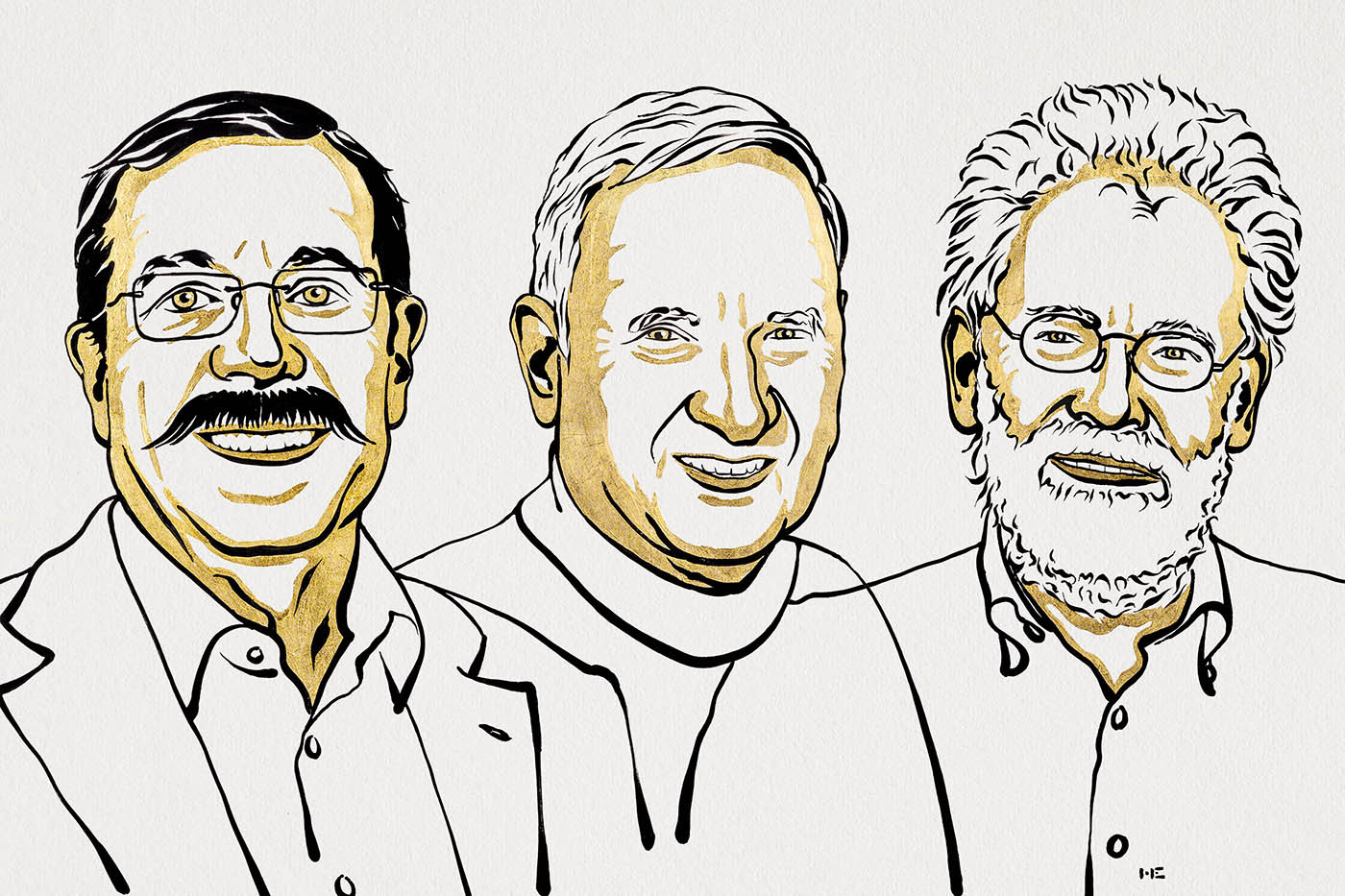Highlights
Nobel Prize in Physics awarded for quantum entanglement
 Image © Nobel Prize Outreach. Illustration: Niklas Elmehed.
Image © Nobel Prize Outreach. Illustration: Niklas Elmehed.
CQT congratulates the quantum scientists Alain Aspect, John F. Clauser and Anton Zeilinger on winning the Nobel Prize in Physics 2022.
They are cited “for experiments with entangled photons, establishing the violation of Bell inequalities and pioneering quantum information science”. The award was announced on 4 October.
“When they worked on it, the violation of Bell inequalities was considered only a fundamental topic – and a ‘too fundamental’ one by many. It required vision and courage to work on such themes,” says CQT Deputy Director Valerio Scarani, who joined the field around the year 2000.
Nowadays, these types of quantum effects are at the heart of emerging technologies for information processing and communication. The Chair of the Nobel Committee for Physics, Anders Irbäck, said, “It has become increasingly clear that a new kind of quantum technology is emerging. We can see that the laureates’ work with entangled states is of great importance, even beyond the fundamental questions about the interpretation of quantum mechanics.”
The violation of a Bell inequality in the outcomes of an experiment, for example from measurements of the properties of pairs of entangled photons, verifies that some features of the measured system go beyond the realm of classical physics. More exactly, it reveals correlations that cannot be explained assuming that each photon’s measurement is determined only by local variables.
Bell inequalities are named for the scientist John Bell, who developed the ideas in the 1960s. He died in 1990. John Clauser pursued the first experimental tests of Bell’s ideas in the 1970s in the United States; Alain Aspect closed loopholes in the tests in experiments in France a few years later. In Austria, Anton Zeilinger then started to use entangled quantum states as a resource for tasks such as quantum teleportation, in a long series of experiments.
The violation of Bell inequalities has direct impact on “device-independent cryptography”, as intuited by CQT’s former director Artur Ekert in 1991 and made explicit by other authors, including Valerio and CQT SAB member Antonio Acin, around 2007. The security of a device independent scheme can be certified from simple measurements, without needing any scrutiny of how the scheme was implemented.
The first experimental demonstrations of this level of cryptography were reported only this year, with Valerio and CQT Principal Investigator Charles Lim co-authoring one of the results. Both their paper and Artur’s initial proposal are cited in the scientific background to the prize provided by the Nobel Foundation.
The theory of Bell nonlocality was also present at the start of quantum in Singapore in the early 2000s, in work by CQT PIs Dagomir Kaszlikowski and Leong Chuan Kwek and now-Emeritus Professor Oh Choo Hiap. Over the years, CQT researchers have also performed several “Bell-type” experiments, with the notable demonstration of device-independent randomness generation in 2018 by Christian Kurtsiefer’s group.
"Among all the manifestations of quantum entanglement, the one that has been chosen is the one with deeper philosophical implications. After the Prize for black holes last year, it's another demonstration that scientific and technological development is often triggered by curiosity and wonder," says Valerio.
The news follows the announcement in September of another major prize for pioneers in quantum information. The 2023 Breakthrough Prize in Fundamental Physics was awarded to Charles H. Bennett, Gilles Brassard, David Deutsch and Peter W. Shor “For foundational work in the field of quantum information”.
The Breakthrough Prizes are styled as the “Oscars of Science” and are sponsored by foundations established by entrepreneurs. The prize in fundamental physics was first awarded in 2012. With the 2023 prize, Charles Bennett and Gilles Brassard are recognised for initiating quantum cryptography and discovering quantum teleportation, David Deutsch for laying the foundations of quantum computing, and Peter Shor for inventing the first quantum computer algorithm that was clearly useful.








